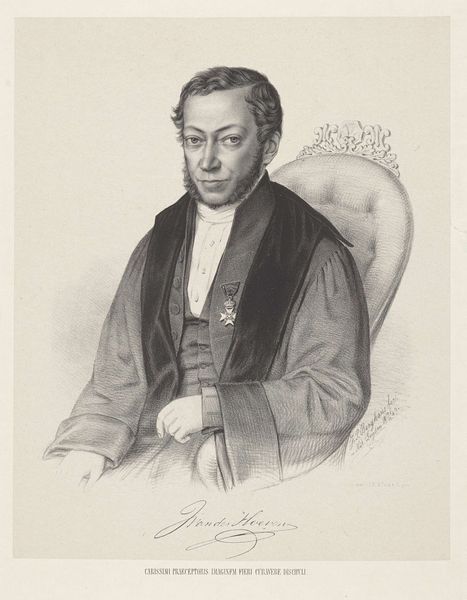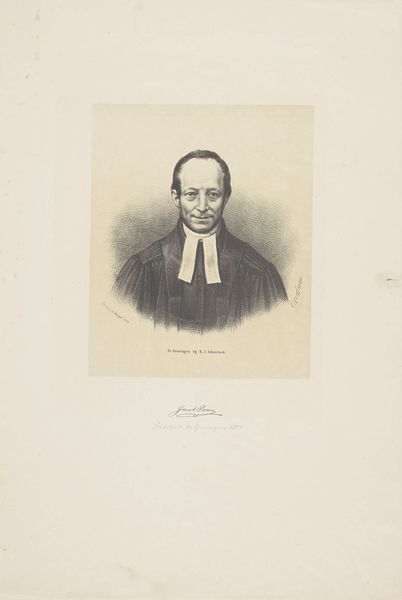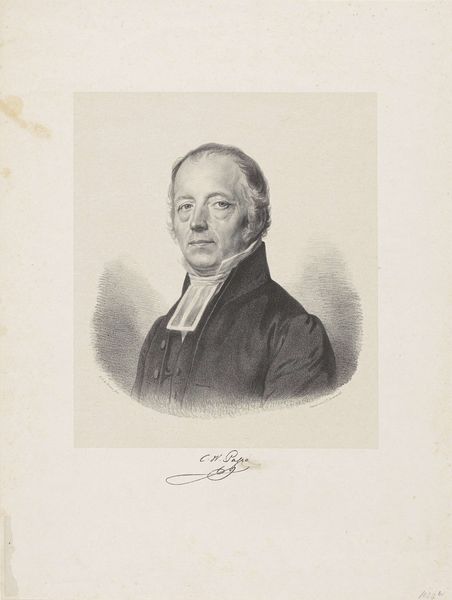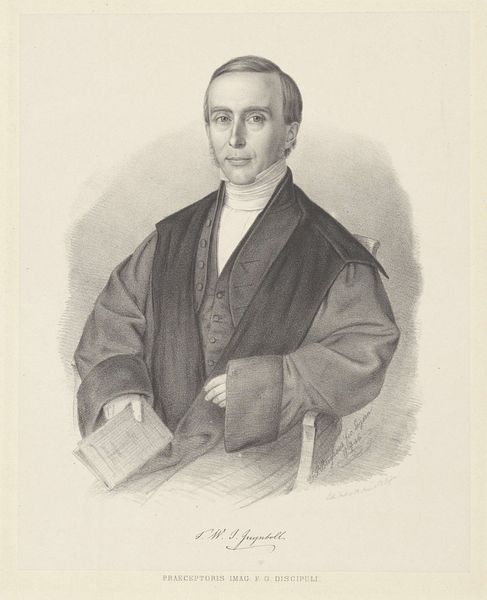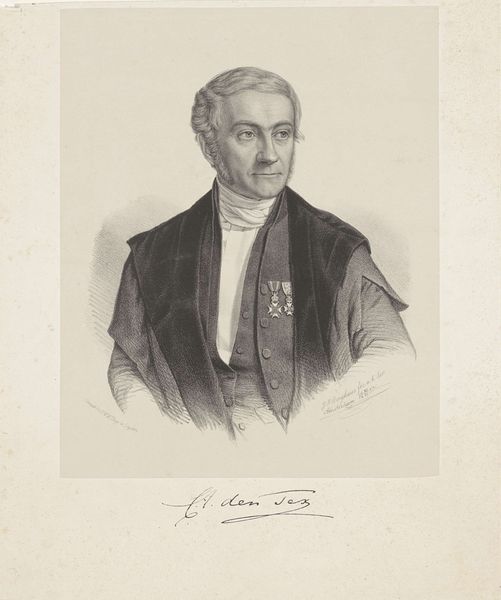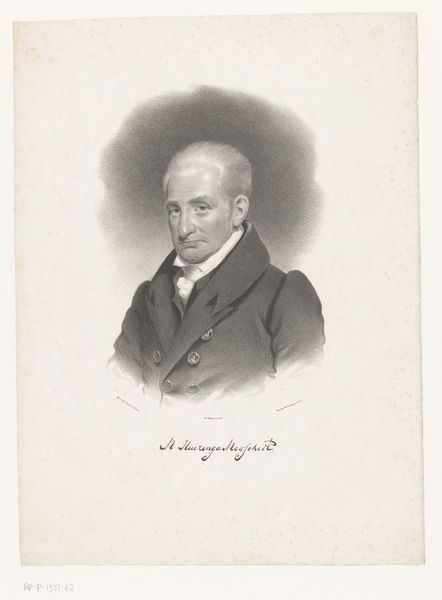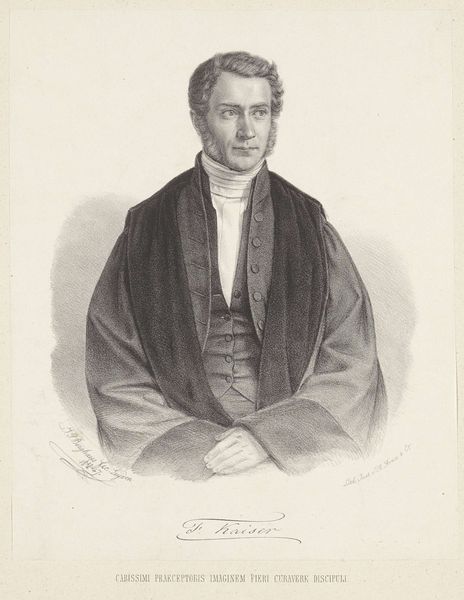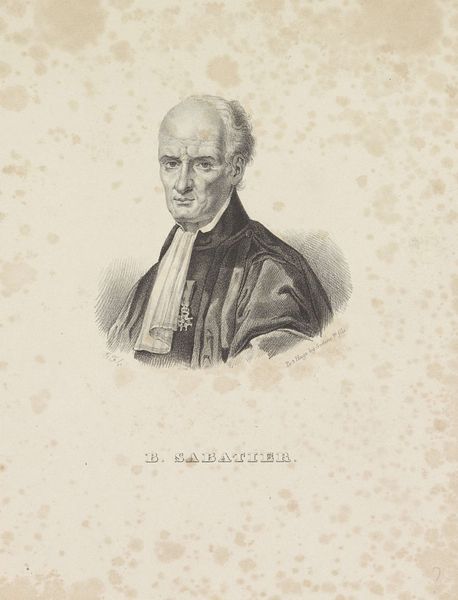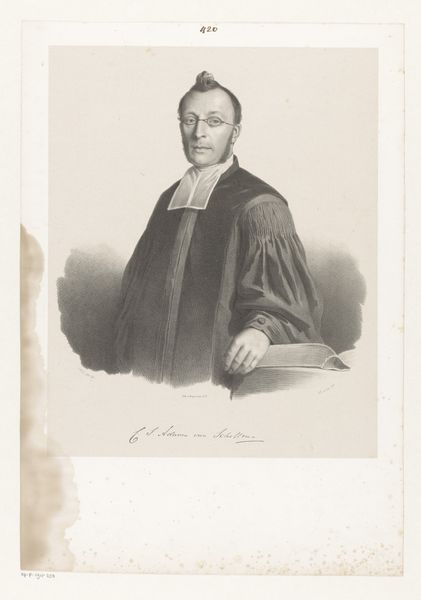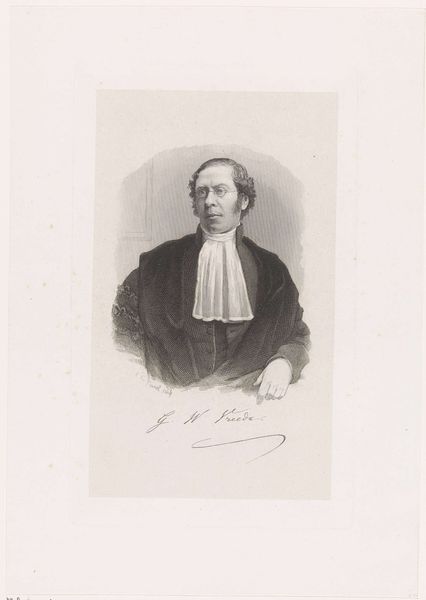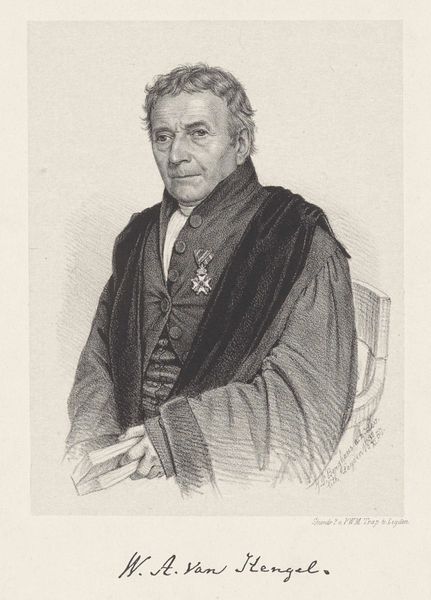
print, engraving
#
portrait
#
neoclacissism
# print
#
historical photography
#
pencil drawing
#
history-painting
#
engraving
Dimensions: height 411 mm, width 320 mm
Copyright: Rijks Museum: Open Domain
This is Johann Peter Berghaus’s portrait of Abraham des Amorie van der Hoeven, made using lithography. Lithography is a printmaking process that relies on the chemical repulsion between oil and water. The artist would have drawn the image onto a flat stone or metal plate with a greasy crayon, then treated the surface so that ink only sticks to the drawn areas. Paper is then pressed against the plate to transfer the image. The texture of the lines and the subtle gradations of tone are achieved by the artist’s skillful manipulation of the crayon and the printing process. The resulting print has a crisp, clean appearance, which lends itself well to portraiture, as it can capture fine details and textures with precision. Lithography emerged as a more efficient means of mass production, making images widely accessible and playing a crucial role in shaping popular culture and visual communication during the industrial era. This portrait speaks to the democratization of art, and the shifting relationships between artists, industry, and audiences.
Comments
No comments
Be the first to comment and join the conversation on the ultimate creative platform.
